One bite. That’s all it takes.
Across deserts, rainforests, mountains, and seas—some of the world’s most dangerous snakes are lying in wait. Fast, silent, and armed with venom that can stop a heart in minutes, these predators don’t bluff. They finish what they start.
And they’re everywhere.
From the spitting cobras of Africa to the sea snakes drifting through warm tropical waters, no continent is free from these scaled assassins. They strike with precision, disappear like smoke, and leave legends in their wake.
These 14 snakes aren’t just deadly—they’re terrifyingly good at what they do. Ready to meet them? Keep your distance.
Inland Taipan
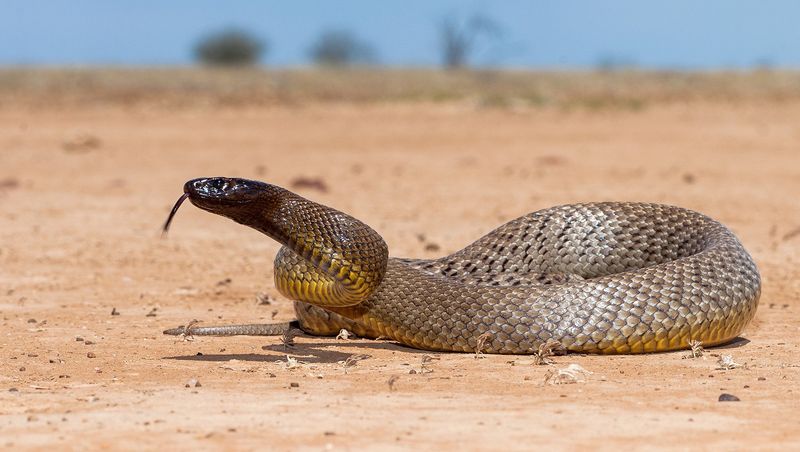
Known as the world’s most venomous snake, the Inland Taipan, or “fierce snake,” prowls the arid regions of Australia. Its venom is potent enough to kill a hundred humans with a single bite. Unlike its aggressive name, this snake is shy and rarely encounters humans.
The Inland Taipan’s habitat is remote, making human interactions uncommon. This snake primarily preys on rodents, ensuring the balance of its ecosystem. Despite its lethal capabilities, the Inland Taipan is a marvel of nature’s design.
Curious fact: Its venom acts in record time, making it a creature best admired from afar.
Black Mamba
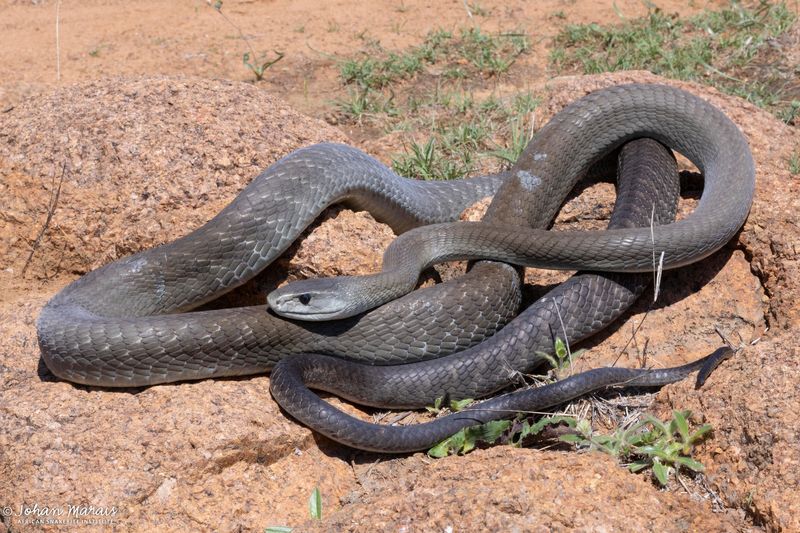
The Black Mamba, Africa’s most feared snake, is known for its speed and agility. It can travel up to 12 miles per hour, making it one of the fastest snakes on the planet. Its name comes from the black coloration inside its mouth, rather than its skin.
Though its venom is deadly, the Black Mamba typically avoids human contact. When threatened, it displays remarkable aggression, striking repeatedly with precision.
An intriguing tidbit: The Black Mamba’s mythological status often overshadows its real-life behaviors, painting it as Africa’s most mythical reptile.
King Cobra
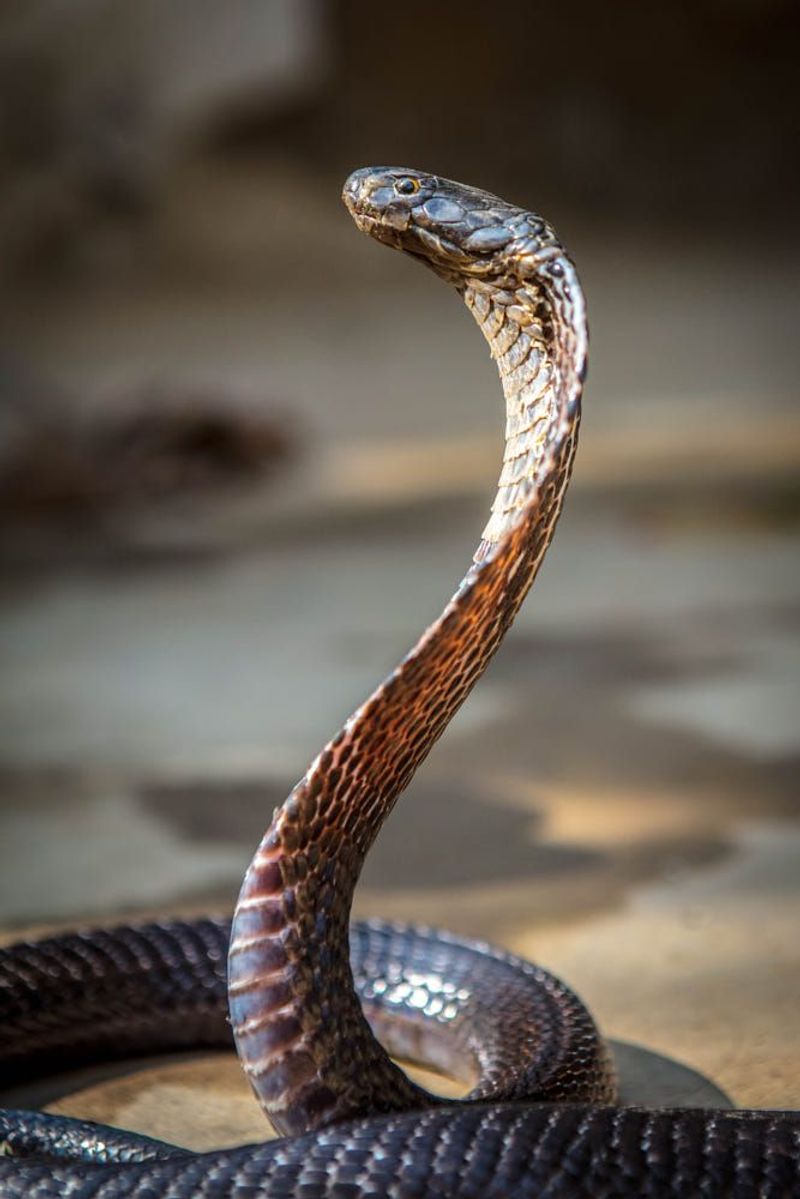
Reigning as the world’s longest venomous snake, the King Cobra is a symbol of power in the jungles of India. It can grow up to 18 feet, and its venom can kill an elephant. This snake is revered in local cultures, often featured in folklore.
Despite its fearsome reputation, the King Cobra is intelligent and can avoid conflict. It primarily feeds on other snakes, controlling the snake population.
Fun fact: The King Cobra constructs intricate nests for its eggs, showcasing a unique aspect of its behavior in the snake world.
Eastern Brown Snake
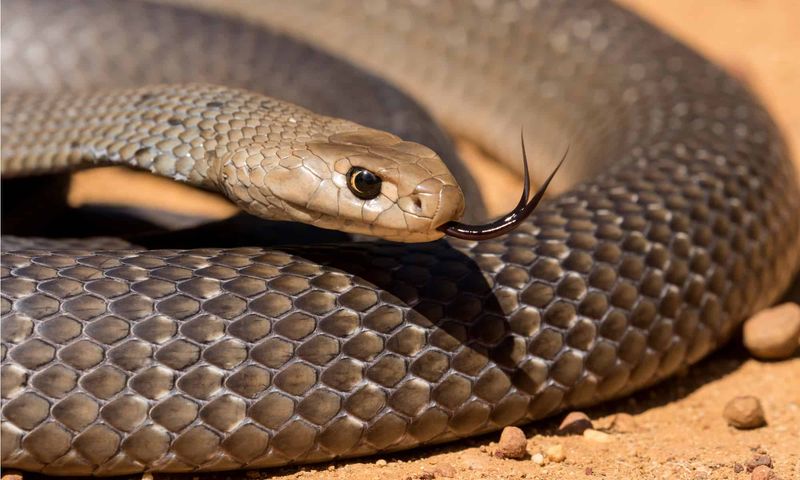
Australia’s Eastern Brown Snake is infamous for causing the most snakebite deaths in the country. Its venom affects the blood, leading to paralysis and heart failure if untreated. This snake is highly alert and may strike if threatened.
The Eastern Brown Snake often inhabits populated areas, increasing the potential for human encounters. Despite its aggression, it plays a vital role in controlling rodent populations.
Did you know? This snake’s adaptability to urban environments makes it one of the most encountered snakes in Australia.
Fer-de-Lance
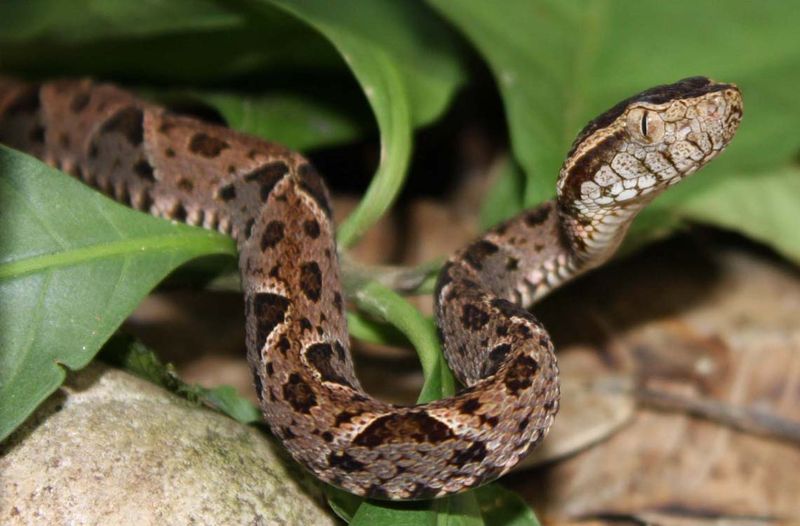
The Fer-de-Lance, prevalent in Central America, is responsible for the majority of snakebite incidents in the region. Its camouflaged appearance makes it nearly invisible in the dense rainforest undergrowth.
This snake’s venom is hemotoxic, affecting blood and tissue, and can lead to severe complications. It often encounters humans due to its proximity to agricultural and populated areas.
A captivating fact: The Fer-de-Lance’s cryptic nature and sudden strikes have earned it a fearsome reputation among locals.
Rattlesnake
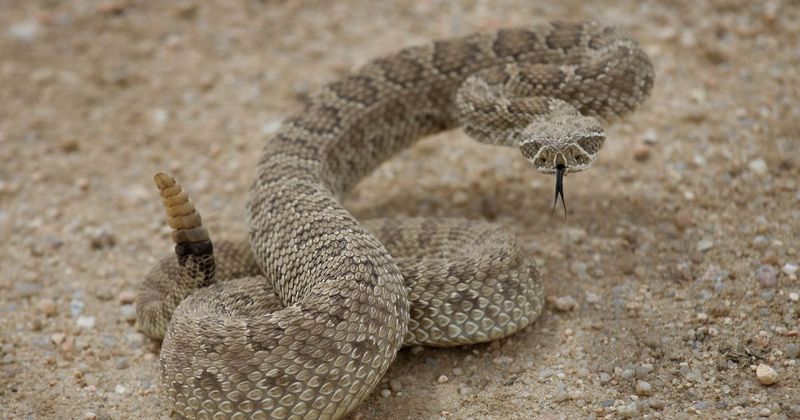
The Rattlesnake, with its distinctive rattle and intimidating presence, is an iconic symbol of North American wildlife. Its rattle serves as a warning to predators and humans alike. With over 30 species, its adaptability is remarkable.
Rattlesnakes are often found in deserts and grasslands, where they control rodent populations. Though feared, they are crucial to maintaining ecological balance.
Interestingly, the rattle is made of keratin and grows as the snake ages, providing insight into its lifecycle and age.
Puff Adder
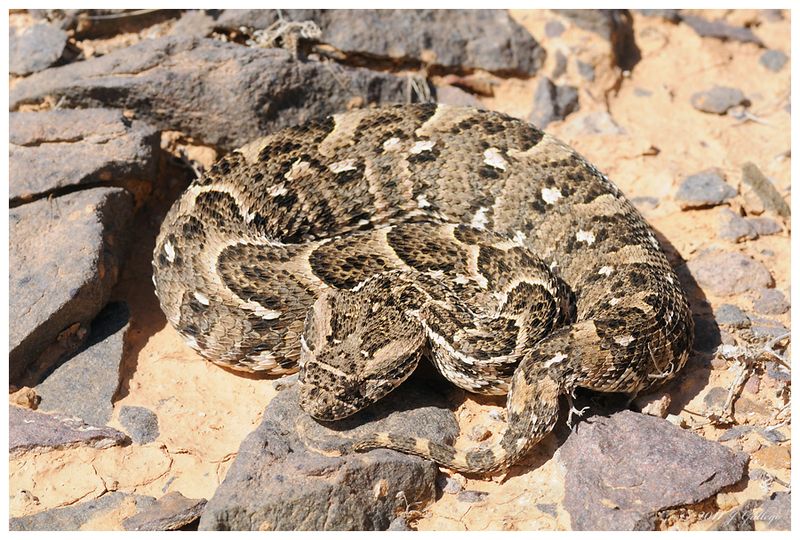
The puff adder is often spotted quietly basking in the sun, but beware of its sudden strike when threatened. With a robust build and vibrant pattern, this snake blends effortlessly into its surroundings. Many unsuspecting victims have fallen prey to its rapid bite.
Native to diverse African habitats, the puff adder holds a notorious reputation for causing the most snakebite fatalities in Africa. Its venom can lead to severe tissue damage, and medical attention must be sought immediately after a bite.
Interestingly, this snake’s hiss is a distinctive warning, echoing across the savannah like a fierce whisper.
Boomslang
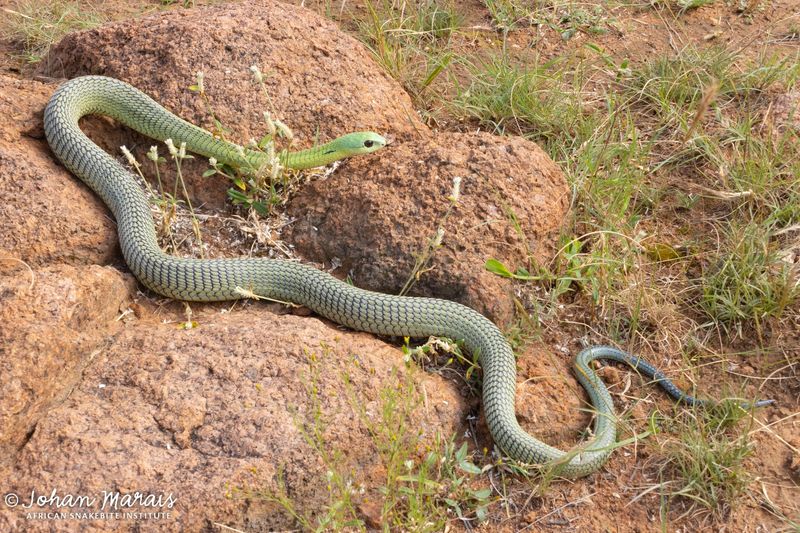
Silent and stealthy, the Boomslang’s vibrant green color blends seamlessly with the African foliage. Though it appears innocuous, this snake’s venom can lead to severe hemorrhaging.
Its fangs are rear-positioned, requiring a precise bite to inject venom. The Boomslang is solitary, preferring trees as its domain.
The snake’s diet includes birds and chameleons, displaying incredible agility. Interestingly, the Boomslang possesses excellent vision, spotting prey from a distance. It’s a reminder that appearances can be deceiving in the animal kingdom.
Gaboon Viper
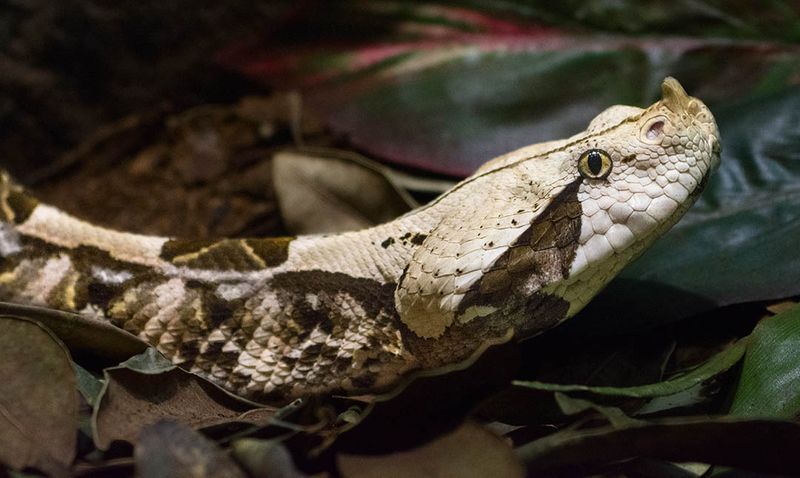
The Gaboon Viper boasts the longest fangs of any snake, reaching up to two inches. Its mesmerizing pattern offers perfect camouflage within the leaf litter of African forests.
With a bite that releases large quantities of venom, it strikes with lethal precision. Despite its fearsome reputation, the Gaboon Viper is typically placid, attacking only when threatened.
Its presence is primarily in rainforests, preying on rodents and birds. This snake’s lazy demeanor is a stark contrast to its deadly capabilities, making it a fascinating subject for herpetologists.
Tiger Snake

Tiger Snakes, known for their striking banded pattern, inhabit Australia. Their venom is highly toxic, causing paralysis and even death if untreated.
These snakes are often found near water bodies, preying on frogs and small mammals. They are highly adaptable, thriving in varied environments.
Tiger Snakes exhibit a remarkable sense of smell, which aids in hunting. Their bold stripes serve as a warning to potential predators, emphasizing their potent threat. Encountering one of these snakes requires caution and respect for their space.
Bushmaster
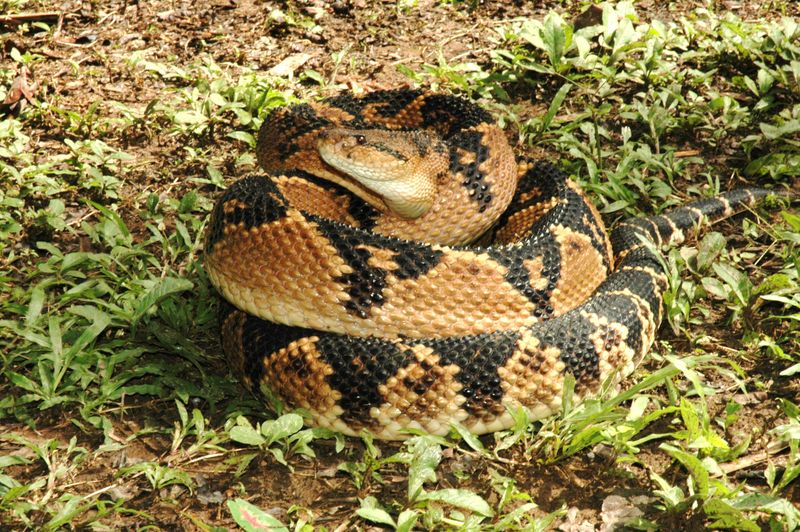
The Bushmaster, Central America’s largest pit viper, is known for its formidable size and potent venom. It often prefers solitude within the humid jungles.
This nocturnal hunter uses heat-sensing pits to locate prey, mainly rodents. While generally reclusive, it can deliver a fatal bite when provoked.
Bushmasters are the epitome of jungle predators, with a reputation that evokes both fear and respect. Their presence in folklore adds to their mystique, embodying the spirit of the wild.
Philippine Cobra
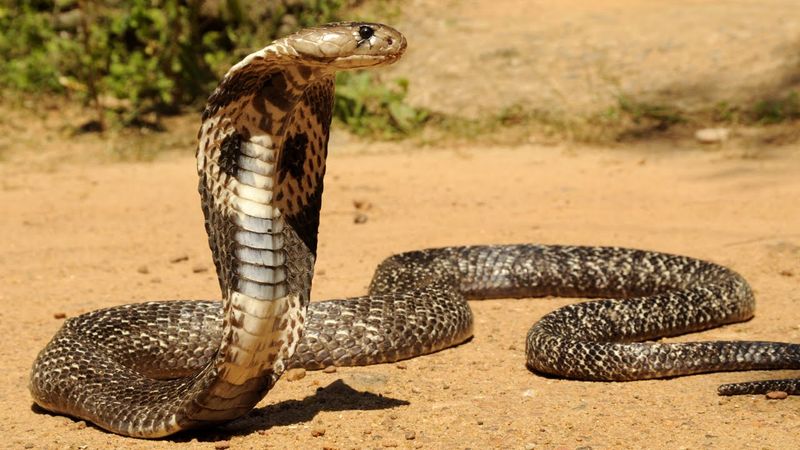
Elegant yet perilous, the Philippine Cobra is famed for its ability to spit venom accurately. Found in the Philippines, it thrives in lush forests and agricultural areas.
Its venom affects respiratory functions, necessitating immediate medical attention. Despite its lethal capabilities, the snake avoids human interaction.
The cobra’s hood, flared when threatened, is iconic. It feeds on rodents and small reptiles, playing a crucial role in controlling pest populations. This snake is a marvel of nature, showcasing both beauty and danger.
Saw-Scaled Viper
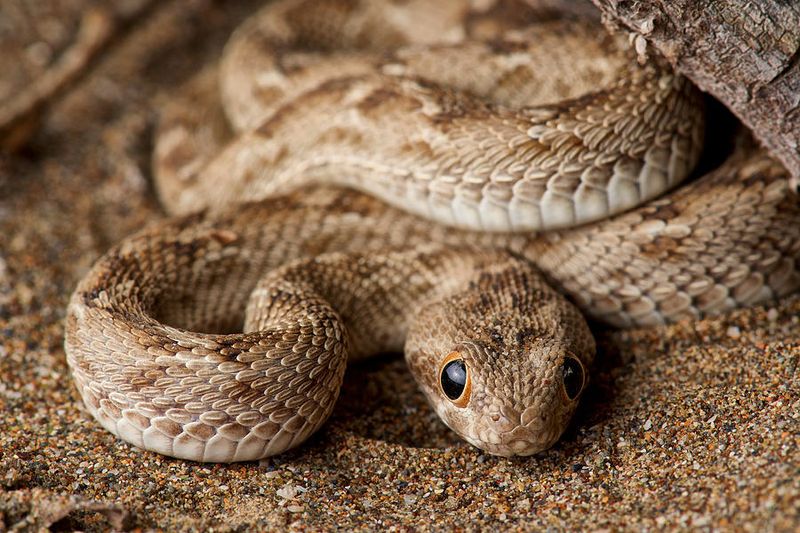
Known for its aggressive nature, the Saw-Scaled Viper is a small but deadly snake found in South Asia. Its distinctive sound, produced by rubbing scales, is a warning sign.
Despite its size, the viper’s venom is potent, causing significant medical emergencies. It inhabits arid regions, showcasing remarkable adaptability.
The snake preys on lizards and insects, contributing to ecological balance. Its reputation is well-earned, as it accounts for numerous snakebite incidents. This viper’s presence is a reminder of nature’s unpredictability.
Death Adder

The Death Adder, true to its ominous name, is one of Australia’s deadliest snakes. Its ambush technique involves lying in wait, ready to strike within milliseconds.
Its venom is neurotoxic, posing a significant threat to nerves and muscles. Despite its lethality, encounters are rare due to its elusive nature.
Death Adders rely on camouflage, blending into the underbrush. Their sudden attack leaves little chance for escape, making them formidable predators. Their legacy is intertwined with myth, capturing the intrigue of many.

